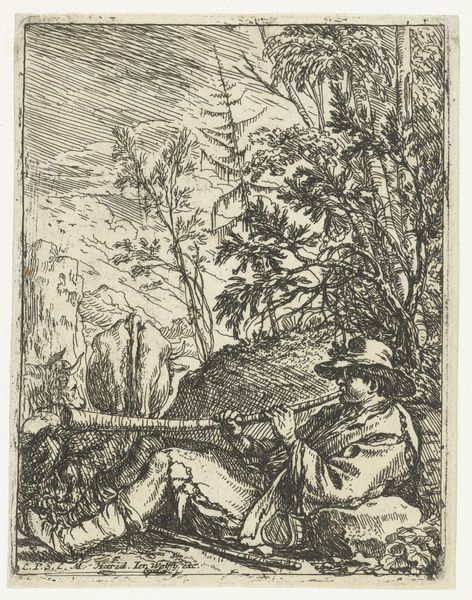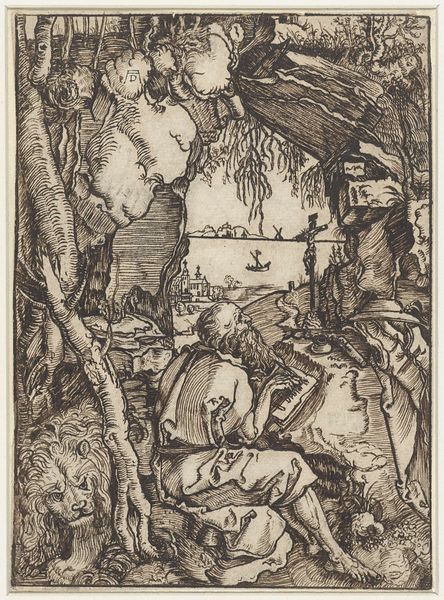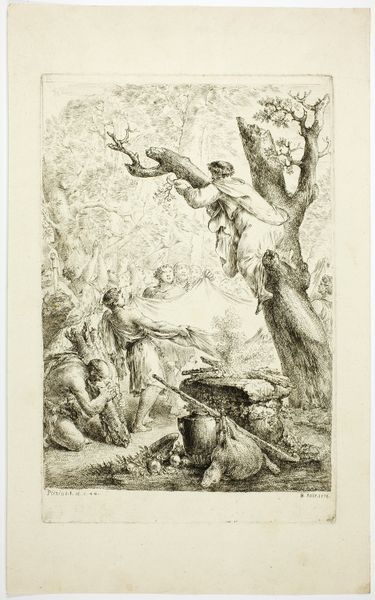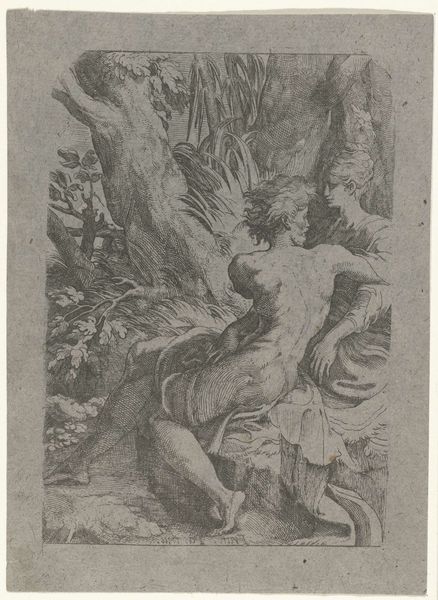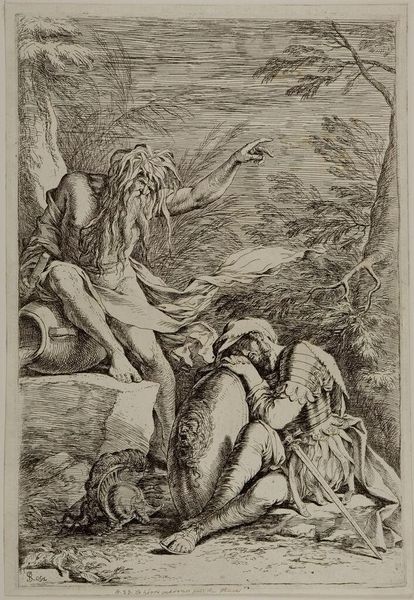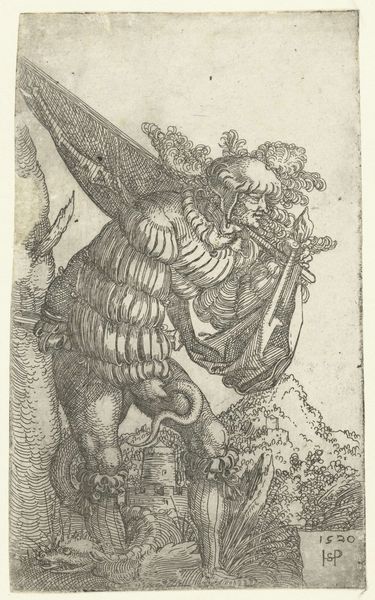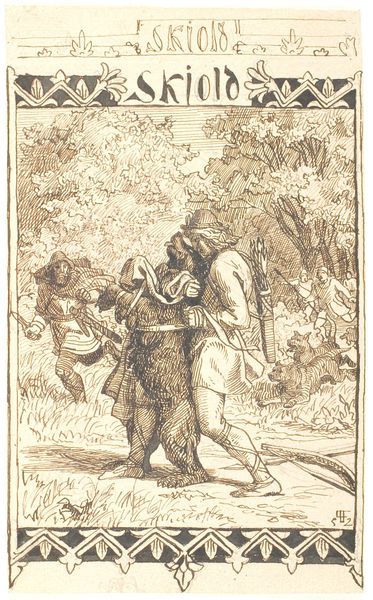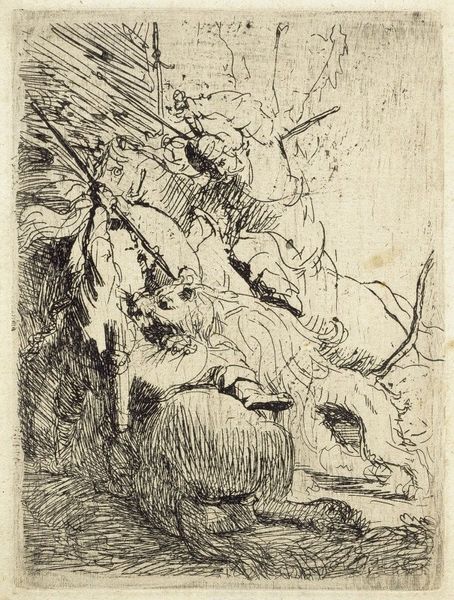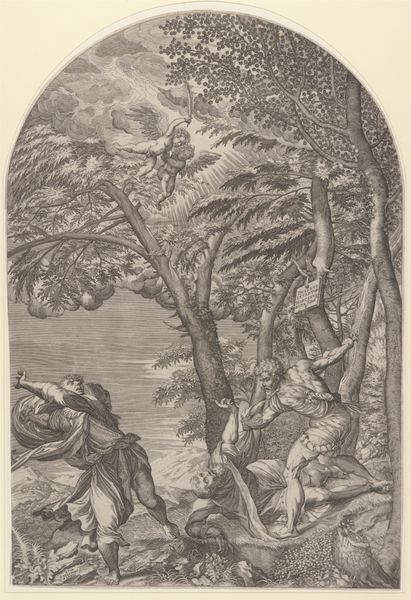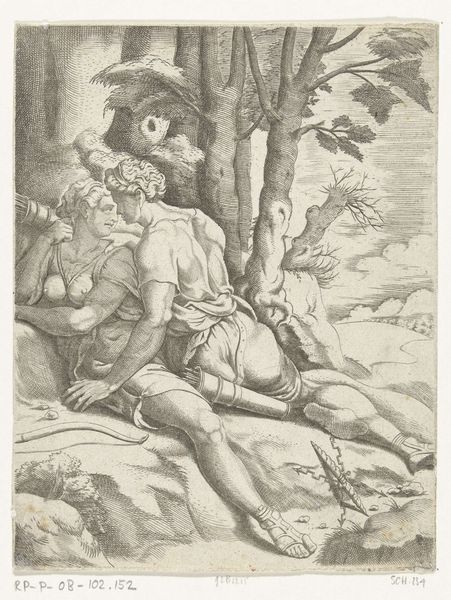
Dimensions: 190 mm (height) x 120 mm (width) (bladmaal)
Curator: Here we have Lorenz Frølich's "Arngrim's Sons", created in 1852. It's an ink drawing, quite detailed, residing here at the Statens Museum for Kunst. What strikes you most about it? Editor: Brutality, for one! A raw, fierce energy pulses from this image. It's like stumbling upon a moment ripped straight from the sagas—a primal dance of death and honor. Curator: The medieval art movement really permeates this piece, wouldn’t you agree? Frølich captures a scene steeped in Nordic legend. We can see the brothers in fierce combat, really emphasizing that hyper-masculine narrative. Editor: Oh, absolutely! The tension in the figures, the swirling landscape in the background—it's all about conveying that sense of dramatic intensity and heroism, all heightened by the monochrome palette. It certainly resonates with a romanticized vision of a long-ago Nordic past. Curator: Indeed. And the composition, you’ll note, utilizes different planes. In the mid-ground you have the figures fighting, then these groupings of men—soldiers. This allows us to see their impending advance. In the top portion is more serene, almost a memory. A quiet, distant home. Editor: It makes you wonder what went into Frølich's technical choices. I mean, the fact that it is an ink drawing only enhances its sense of urgency and almost chaotic quality, especially considering the narrative's intense subject matter. But looking at it through the lens of romanticism, you feel that pull towards the past, towards mythology, toward something wild. Curator: Well said. The landscape evokes the wild beauty and harshness of Scandinavia. It complements that saga. Editor: Ultimately, viewing something like "Arngrim's Sons", it brings a somber thoughtfulness, reminding us how history painting becomes less about accurately portraying a verifiable moment and more about evoking emotion and even projecting a national spirit. Curator: And a potent spirit it is. To meditate on familial obligation and masculine expectations during that moment in the mid-19th century. Fascinating.
Comments
No comments
Be the first to comment and join the conversation on the ultimate creative platform.
